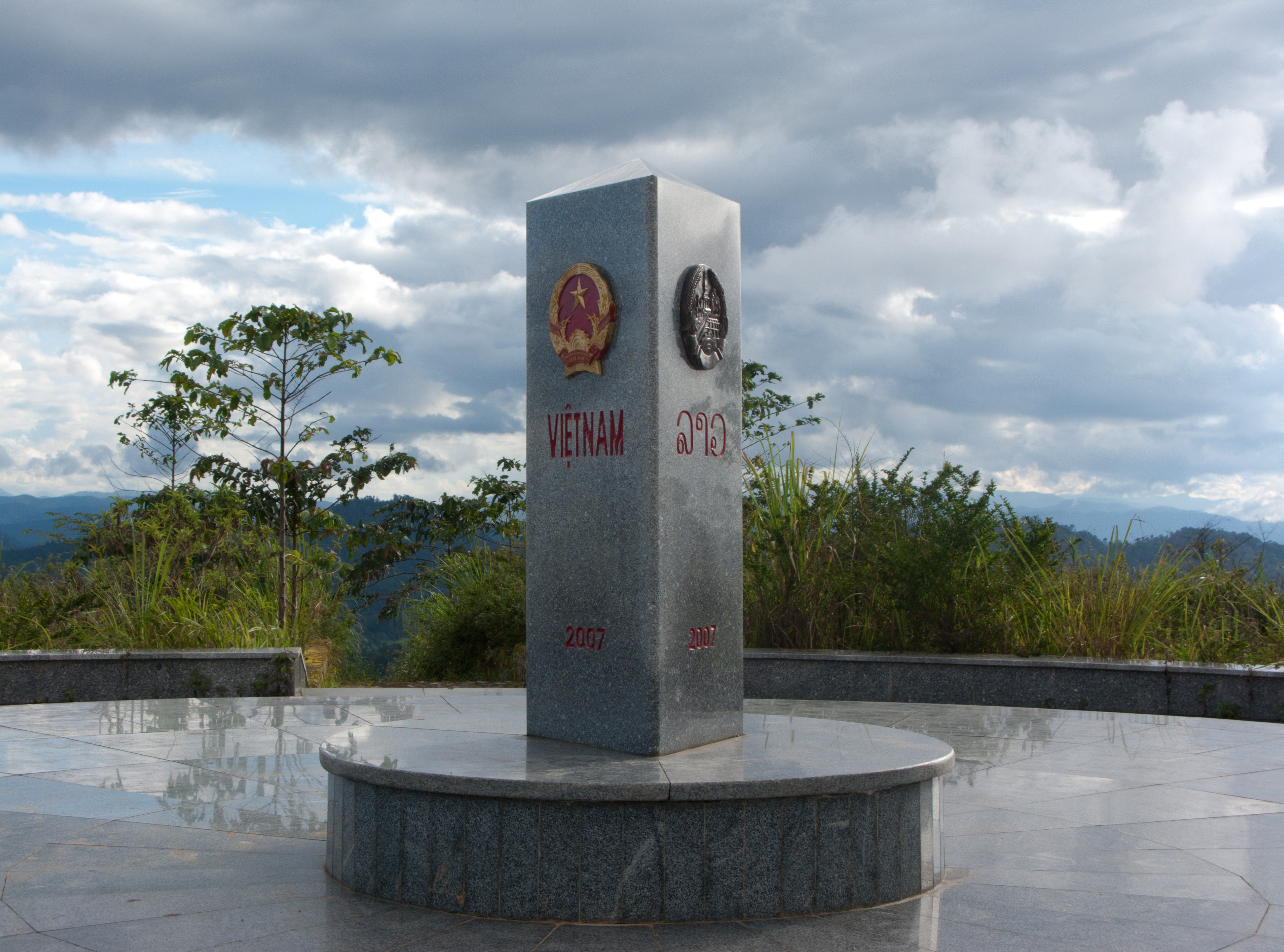Laos-Vietnam Border Trade Agreement Signed
 A bilateral border trade agreement between Laos and Vietnam was signed on June 27, 2015 in Vietnam’s Nghe An Province. Laos’ Deputy Prime Minister Somsavat Langsavad and Vice Minister of the Ministry of Industry and Commerce Khemmani Pholsena, along with Vietnamese counterparts Deputy Prime Minister Nguyen Xuan Phuc and Minister of Industry and Trade Vu Huy Hoang were in attendance.
A bilateral border trade agreement between Laos and Vietnam was signed on June 27, 2015 in Vietnam’s Nghe An Province. Laos’ Deputy Prime Minister Somsavat Langsavad and Vice Minister of the Ministry of Industry and Commerce Khemmani Pholsena, along with Vietnamese counterparts Deputy Prime Minister Nguyen Xuan Phuc and Minister of Industry and Trade Vu Huy Hoang were in attendance.
The 23-article agreement establishes the principle that all land border crossings between the two countries are open for bilateral trade. It covers procedures for payment in cross-border trade, including transportation of cash across land borders. In addition, it regulates entry and exit procedures for individuals and vehicles.
 RELATED: Dezan Shira & Associates’ Payroll and Human Resources Services
RELATED: Dezan Shira & Associates’ Payroll and Human Resources Services
It contains a commitment to reduce to zero import taxes on goods made in either Laos or Vietnam, and those on products made by Vietnamese investors in Laos.
Under the agreement, the two countries will establish a Steering Committee on Border Trade and hold a biennial conference on the development of bilateral border trade relations.
Laos and Vietnam share six land border crossings, being Sop Hun-Tay Trang, Na Maew-Nam Xoi, Nam Can-Nam Khan, Nam Phao-Cau Treo, Dansavanh-Lao Bao, and Bo Y-Ngoc Hoi.
Complimentary Bilateral Relations
Signing of the agreement is a step in the direction of reaching the two countries’ bilateral trade target of US$2 billion in 2015.
Cooperation between the two countries is supported by high-level dialogue between the leaders. President of Laos Bounnhang Vorachith met with Vietnam’s Prime Minister Nguyen Tan Dung in Hanoi on July 7, 2015, and reportedly discussed culture, defence, education, investment and trade. Strong relations with its neighbors will assist landlocked Laos when it assumes the position of ASEAN Chair in 2016.
 RELATED: Residency Schemes in ASEAN – Eligibility Requirements
RELATED: Residency Schemes in ASEAN – Eligibility Requirements
Vietnam’s gross domestic product of US$186.2 billion in 2014 dwarfs that of neighboring Laos, which only reached US$11.77 billion in the same year, less than a fifteenth of Vietnam’s size. The population of Laos reached an estimated 6.8 million in 2014, compared to Vietnam’s 90.7 residents. Vietnam shares its longest border with Laos, at 2,130 kilometres in length.
Laos-Vietnam relations in the investment sphere are rather one-sided. In the first half of 2015, businesses from Laos only established two projects in Vietnam with total registered capital of US$2.5 million. In comparison, in November 2014 Vietnam’s Ministry of Planning and Investment announced that Laos had licensed 423 investment projects with a value of US$5 billion. Close to 95 percent of the projects were in central and southern regions. Developer Hoang Anh Gia Lai had reportedly made US$1.2 billion of investment in Laos, mainly in agriculture and hydropower.
|
Asia Briefing Ltd. is a subsidiary of Dezan Shira & Associates. Dezan Shira is a specialist foreign direct investment practice, providing corporate establishment, business advisory, tax advisory and compliance, accounting, payroll, due diligence and financial review services to multinationals investing in China, Hong Kong, India, Vietnam, Singapore and the rest of ASEAN. For further information, please email asean@dezshira.com or visit www.dezshira.com. Stay up to date with the latest business and investment trends in Asia by subscribing to our complimentary update service featuring news, commentary and regulatory insight. |
 The Asia Sourcing Guide 2015
The Asia Sourcing Guide 2015
In this issue of Asia Briefing, we explain how and why the Asian sourcing market is changing, compare wage overheads, and look at where certain types of products are being manufactured and exported. We discuss the impact of ASEAN’s Free Trade Agreements with China and India, and highlight the options available for establishing a sourcing and quality control model in three locations: Vietnam, China, and India. Finally, we examine the differences in quality control in each of these markets.
The 2015 Asia Tax Comparator
In this issue, we compare and contrast the most relevant tax laws applicable for businesses with a presence in Asia. We analyze the different tax rates of 13 jurisdictions in the region, including India, China, Hong Kong, and the 10 member states of ASEAN. We also take a look at some of the most important compliance issues that businesses should be aware of, and conclude by discussing some of the most important tax and finance concerns companies will face when entering Asia.
 The Gateway to ASEAN: Singapore Holding Companies
The Gateway to ASEAN: Singapore Holding Companies
In this issue of Asia Briefing Magazine, we highlight and explore Singapore’s position as a holding company location for outbound investment, most notably for companies seeking to enter ASEAN and other emerging markets in Asia. We explore the numerous FTAs, DTAs and tax incentive programs that make Singapore the preeminent destination for holding companies in Southeast Asia, in addition to the requirements and procedures foreign investors must follow to establish and incorporate a holding company.
- Previous Article State by State: ASEAN and Virginia Trade
- Next Article Assessing Foreign Investment Prospects in ASEAN Through the Business Optimism Index









